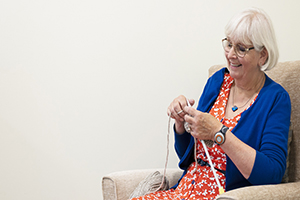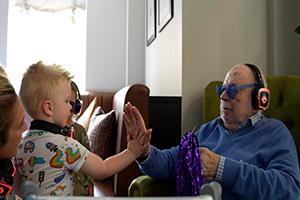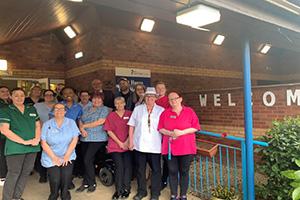What is Connected Health?
Connected Health is a model for the delivery of healthcare that harnesses the power of technology to enable care to be delivered where and when it is needed most, making more efficient use of available resources. It connects patients and clinicians, providing insight which enables more proactive, preventative and person-centred care, reducing costs, improving outcomes and enhancing the patient experience.
Connected Health solutions combine software, hardware and pathway redesign to support individuals in the community and help clinicians to manage caseloads more effectively.
 The benefits of Connected Health
The benefits of Connected Health
Connected Health technology can support patients to manage their condition at home, helping them to understand the effects of their behaviour on their health and stabilise their condition. It can also enable any deterioration in health to be identified and treated at an early stage, avoiding the need for more complex interventions.
There are a number of connected health benefits for managing heart failure including the early identification of and response to deterioration, the provision of objective information to improve clinical decision making, contribution to the stabilising of patients and reduction in the number of hospital admissions.
Connected care also supports timely discharge and reduces delayed transfers of care, identifies trends over time to aid proactive care planning, provides patients with the confidence to self manage and aids medication and activity compliance with reminders and coaching.
Connected Health in reality
In my role as Lead Clinical Application Specialist, I work with a number of Trusts around the UK, helping them to include RPM in pathways to improve the patient experience and support better outcomes. This kind of monitoring can be useful for a wide range of cohorts, including patients with long term conditions such as COPD, and children with eating disorders.
For patients with heart failure, criteria for selection includes high risk patients, patients who are decompensating, patients who need prompting to act on the exacerbation of their condition, patients whose medication is titrated, and patients who may have difficulties with transportation for clinic-based care.
In a typical telehealth service for heart failure, patients use peripherals to take their vital signs readings each day, and these results are reviewed daily and triaged for action by nurses at the Heart Failure Unit at the local hospital. Results outside of the set parameters for that patient will raise an alert, enabling a specialist heart failure nurse to be notified and take appropriate action such as advising the patient to take diuretics, clinic review or a home visit. Nurses can also view individual patient’s results over time, enabling them to identify trends.
Feedback from nursing staff is that they find digital health monitoring to be a really useful tool, helping them to see at a glance who needs them the most, and treat patients who are decompensating before they deteriorate to the point of needing admission to hospital. Sadly, some patients have a life limiting condition, and the service helps to keep them stable and at home with their loved ones as much as possible.
The digital service has enabled a number of positive outcomes for both clinicians and patients including the easy prioritisation of care, the close monitoring of patients with a reduction in the need for face-to-face meetings, and early intervention to prevent deterioration and the need for more complex care.
Results have been more objective than patients reporting their own symptoms, supporting informed clinical decision making and avoiding the issues of patients who delay reporting any deterioration in their health until they are very ill. Patients find it reassuring to be monitored every day, and many become more aware of their condition as a result and better able to manage it.
The initiative is in line with Government objectives to increase the use of technology and work innovatively to address some of the challenges facing the NHS.
For more information on Connected Health services and the support available for people living with cardiovascular disease, www.tunstall.co.uk.





